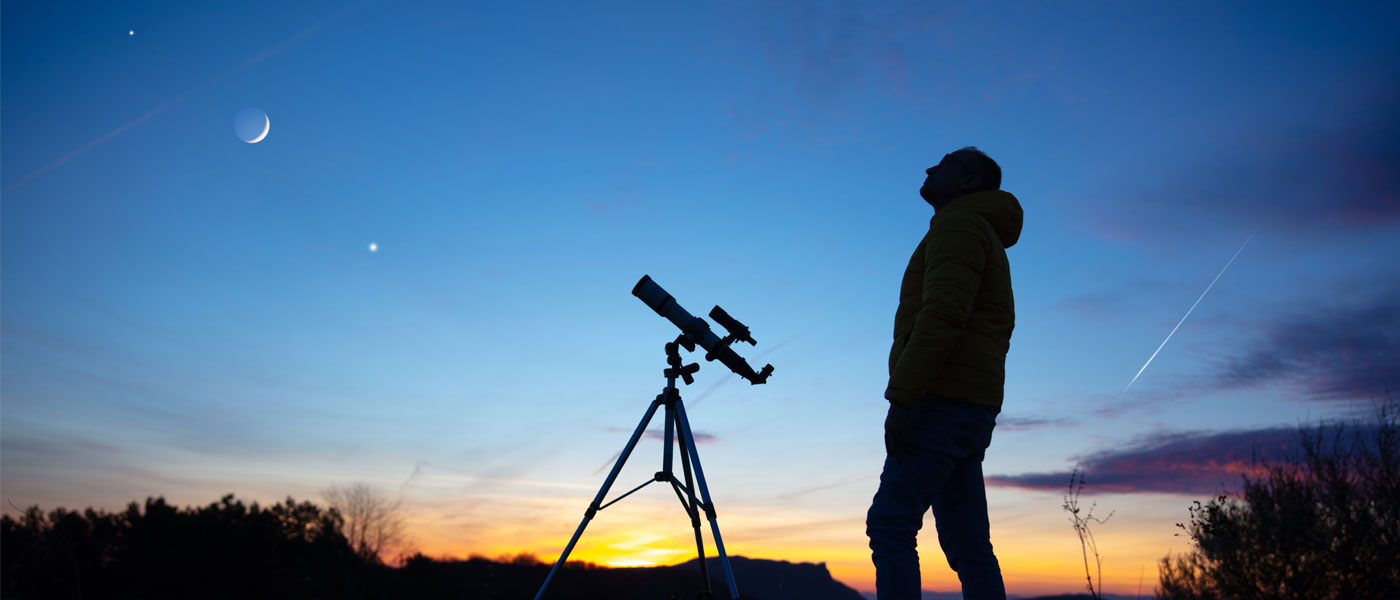Have you ever looked up at the night sky and wondered exactly what you’re seeing? On Friday, Feb. 28, if you take a moment to turn toward the sky, you’ll be in for a special treat. Seven planets—Saturn, Mercury, Neptune, Venus, Uranus, Jupiter and Mars—will be visible all at once, though you might need to get away from the city lights and bring a telescope to see them all.
Dubbed a “planetary parade,” this occurrence is relatively rare, though some news sources have overstated just how unique it truly is, according to Bill Janesh, senior instructor of astronomy at Case Western Reserve University.
Some have referred to this celestial event as a “planetary alignment,” which is an instance astronomers reserve for when “planets are very close to each other in the sky—usually within a couple of degrees of angle,” Janesh explained.
Despite the miscommunication about the rarity of this week’s spectacle, it is still a great opportunity to learn more about our solar system.
“Either way, there’s plenty of fun things to look at in the sky right now!” Janesh said.
We spoke with Janesh to learn more about what else to expect during the planetary parade.
And the astronomical spectacles won’t end there. If last year’s solar eclipse left you in awe, consider stepping outside late on March 13 and early March 14 to witness a full lunar eclipse.
1. We’ve heard the event being referred to as a “planetary parade.” Is that an accurate description?
I think it’s certainly more accurate than the term “alignment!” It helps convey the idea that the planets are more spread out across the sky than usual.
2. How can people view Uranus and Neptune during this event?
A pair of good binoculars or a telescope, and some sort of sky chart or app that can tell you where to look. Neptune is likely to be lost in the sunset and downtown’s light pollution, but those steps can help give a better chance. Uranus will be closer to Jupiter and the Pleiades, a star cluster near Taurus the Bull.
3. How rare is it actually to be able to see all of these planets in one night, even when not aligned?
I had to do a little bit of math for this one, but the answer is it depends on where Jupiter and Saturn are. Right now, Saturn is in the same half of the solar system as Uranus and Neptune, so we have 2.5 years of Jupiter on the same side, then 2.5 years of Jupiter on the opposite side. Venus and Mars have shorter orbits, so they switch sides every 4 and 8 months or so, respectively. Once Saturn switches sides in about 15 years, we’ll have to wait another 10+ years for it to be visible in the same night sky as Uranus and Neptune.
4. For those unfamiliar with astronomy, how would you encourage them to learn more about the night sky outside of this experience?
The easiest way for the CWRU community would be to come to a rooftop telescope night sponsored by the Physics and Astronomy Club for Women and Gender Minorities. Keep an eye out on CampusGroups for info on one happening in early March or April!
My favorite resource is Sky and Telescope magazine, which also has a great webpage.
5. Overall, is this something you think is worth making a “big” deal out of for the average person?
I think the sky is always a big deal! Anything that gets people curious about science or thinking about their place in the universe is worth it in my book.


